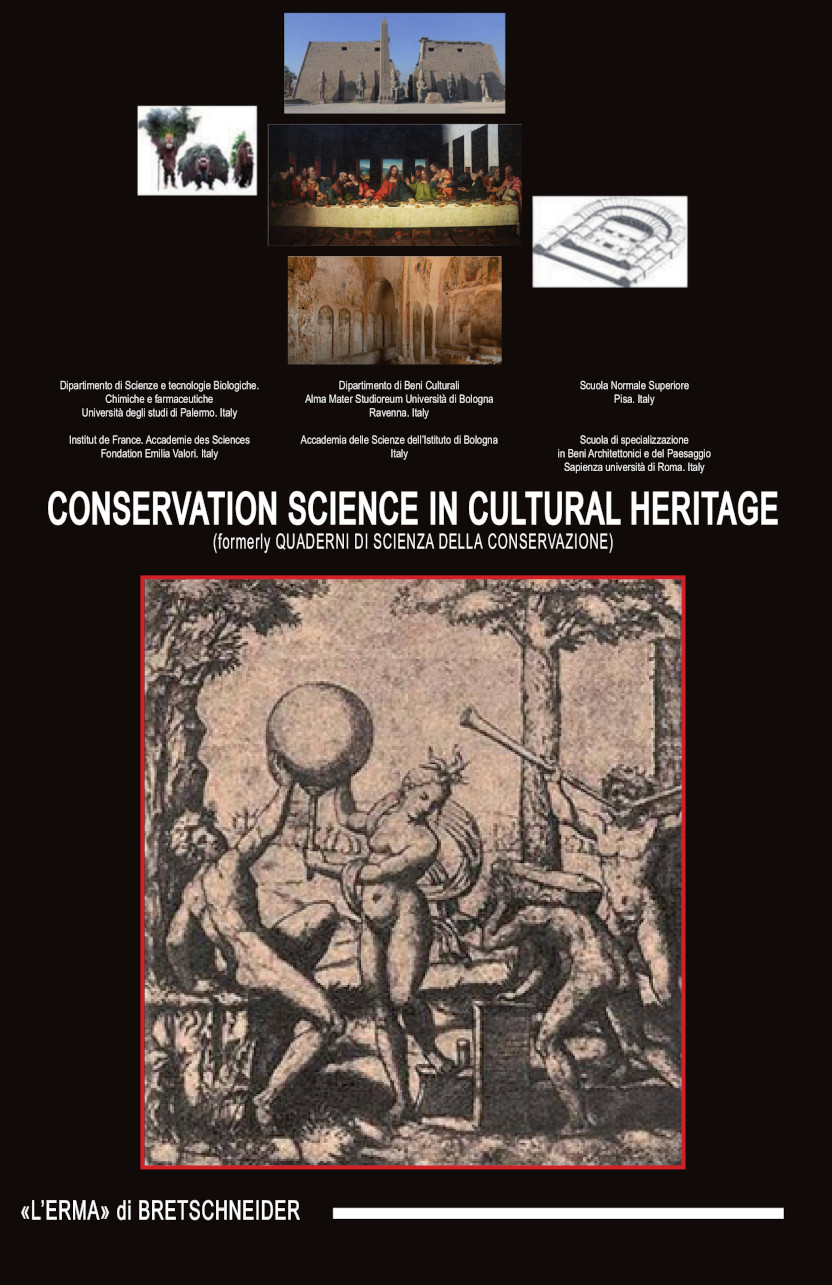Multi-Level Characterization of Microbial Consortia Involved in the Biodeterioration of Wooden and Stone Romanian Heritage Churches
DOI:
https://doi.org/10.6092/issn.1973-9494/12805Keywords:
Romanian heritage churches, biodegradation, fungi, bacteria, dependent /independent cultivation methodsAbstract
The 17th to 19th century wooden and stone churches are an iconic symbol of Romanian national heritage. The present study investigates by qualitative and quantitative methods the microbial communities from the biodeteriorated surfaces of wooden and stone monument churches included in the cultural heritage list of local or national importance. From a total of twelve monuments, samples were taken with cotton sterile swabs, inoculated on specific culture and identified by classical, automated and molecular methods. A total of 133 strains belonging to Ascomycota phylum were identified and confirmed at species level from the wooden churches, amongst which, Penicillium spp. strains (mostly P. corylophylum, P. chrysogenum) were the most frequent, followed by Alternaria alternata and species of Trichoderma, Aspergillus, Rhizopus, Mucor, and Fusarium genera. From the stone churches a total of 100 strains belonging to Aspergillus, Alternaria, Mucor, Penicillium, Aspergillus, Trichoderma, Fusarium and Rhizopus genera were isolated.
A total of 55 bacterial strains were isolated and identified as Bacillus, Artrobacter and Pseudomonas species. The microbial load of the samples ranged between 2.18x107 and 3x105 CFU/mL. A very small number of fungal strains (6/77) isolated from wooden churches (mostly A. alternata, followed by P. corylophilum and one Cladosporium spp. strain) and from stone churches (5/55) (mostly A. alternata, followed by A. versicolor, A. nidulans strain) were involved in biofilm formation.
The results of this study can help to improve understanding of the microbial deterioration of Romanian heritage churches and allow more reliable decontamination, conservation and preservation tools to be defined.
Downloads
Published
How to Cite
Issue
Section
License
Copyright (c) 2021 Irina Gheorghe, Ionela Sârbu, Ionut Pecete, Ion Blăjan, Irina Balotescu

This work is licensed under a Creative Commons Attribution 3.0 Unported License.





